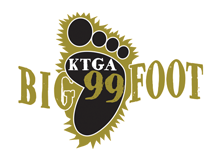Photo – An etching of Fort Fetterman that appeared in Harper’s Weekly – Courtesy Wikipedia
On November 16, 1878, Fort Fetterman was preparing for the Thanksgiving holiday.
Eleven miles northwest of Douglas, located on a high bluff south of the North Platte River, just outside of known Indian Country, sat Fort Fetterman. The fort served as a major military base. Fort Fetterman was a supply point for Army operations throughout the west. The fort was named in honor of Captain William J Fetterman who was killed in a battle with Indians near Fort Phil Kearny on December 21, 1866.
Fort Fetterman was not included in the provisions of the 1868 Treaty of Fort Laramie. The treaty was signed ten years earlier with the Lakota, Arapaho, and other tribes, which resulted in the Army’s abandonment of Forts Reno, Phil Kearny, and C.F. Smith in northern Wyoming. Another result of the treaty was Fort Fetterman becoming the northern most military post in eastern Wyoming.
Fort Fetterman was important to the protection of the Bozeman Trail and other settler routes. It was not a prime assignment. Hot in the summer, freezing cold in the winter, the fort was notable for the frequent desertions of soldiers who were assigned there.
In 1876, during the Great Sioux War with the Lakota Sioux, Cheyenne, and Arapahoe tribes, the monotony of garrison duty at Fort Fetterman was broken by a series of major military expeditions that set out from the fort.
In 1882, the military would abandon Fort Fetterman after years of military operations subdued the tribes.
Back to four years before the gates of the fort would close forever, Thanksgiving 1878. The supplies on hand for the holiday were 195 pounds of turkey, 140 pounds of cod fish, and eleven pounds of cherries.
———————————————————————————————–

Photo – The Rescue by Charles Belden – Courtesy Buffalo Bill Center of the West
Also, on this date in 1887, a legendary photographer of Wyoming, Charles Belden, was born in California.
The following description is from an article posted by the American Heritage Center at UW in Laramie.
Reaching the Pitchfork Ranch in the 1920’s wasn’t easy. In fact, it was arduous. Imagine yourself on the trek. After transferring at the Billings, Montana branch line to the end of the rails in Cody, Wyoming, a light horse-drawn stage drives you over rutted dirt roads to Meeteetse. A little town, some forty miles to the southeast of Cody, the delights of Meeteetse entail a hotel room (which is shared with two or three other guests), a barber shop (with a wood burning stove to boil water for the only public bathtub), a disreputable Chinese short order diner (serving the worst food for miles), a general store, a lively saloon, a not so spirited saloon, and a livery stable.
You know the Pitchfork Dude Ranch was the place to experience the real West because you had heard so much about it. How could you not? it was advertised in all the leading magazines and newspapers of the day. This ranch’s popularity was the result of one man. You already knew his name, Charles Belden.
Belden’s staged photographs of life in the Wyoming west are amazing. They were staged for visual poetry, their archetypical imagery of the Western Cowboy experience that Hollywood would mimic in the coming decades…drama, design. Belden often used portable Zeiss Minimum Palmos 4X5 cameras. The negatives were 4″X5″, so the images are clear and detailed, the negatives are also glass. Glass is heavy to carry.
Like dime western novels, Belden’s most famous images did not depict the everyday life of the working ranch hand as much as they did the romance of a cook fire sing-a-long on the range, a picturesque pond with a cowboy taking a drink using his wide-brimmed cowboy hat, or lighting up a cigarette in a setting right out of a Marlboro cigarette ad. Belden recognized these were the scenes Eastern and foreign visitors expected at a western dude ranch. He knew the images would sell magazine copies and attract dudes.
Belden codified the west. His images were as iconic as Ansel Adams photographs of National Parks would be 40 or 50 years later. But, Belden included cowboys. His photographs, though staged, depicted a majestic and larger than life American West. He was sought out in New York and Los Angeles to advertise products using the Wyoming west as backgrounds. Solitaire coffee ads, cigarette ads, restaurant menus, and other commercial ventures. According to his daughter Lili, Belden became so famous, the post office would deliver a letter to him that was addressed only with a drawing of a man behind a camera wearing a cowboy hat standing next to a pitchfork with one word, Wyoming. This delivery was noted in Ripley’s Believe It or Not!
By the 1930’s, the Pitchfork Ranch and Charles Belden were as famous as any of the day’s celebrities. Belden popularized Wyoming, the West, and the Dude Ranch.
After the American economic collapse during the Great Depression, Belden moved to Florida. His images of the West that were taken in Western Wyoming, continued to fuel the quest for the authentic Western American experience for the coming decades.













